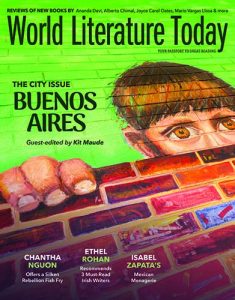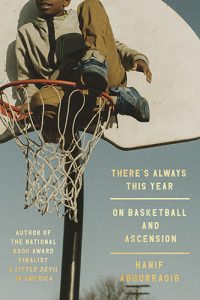MAKE – Fall/Winter 2010-11
Issue 10
Fall/Winter 2010-11
Biannual
Jennifer Vande Zande
The Fall/Winter 2010-11 issue of MAKE is dedicated to the spirit of play. And the work presented within is most definitely playful – both in its layout and its content. But don’t assume that because its framework is built around play that it must also be somehow unsophisticated or impetuous. As the editors point out at the start, “the seemingly lighthearted subthemes are all tempered by profound solemnity.” MAKE explores the youthful pastime of play, but in the end offers up very grown-up compilation of literary work.
The Fall/Winter 2010-11 issue of MAKE is dedicated to the spirit of play. And the work presented within is most definitely playful – both in its layout and its content. But don’t assume that because its framework is built around play that it must also be somehow unsophisticated or impetuous. As the editors point out at the start, “the seemingly lighthearted subthemes are all tempered by profound solemnity.” MAKE explores the youthful pastime of play, but in the end offers up very grown-up compilation of literary work.
It’s an enduring theme. The young adult, dissatisfied with life in a small town, decides to leave it and everyone they have ever known behind. Usually unequipped to navigate the capricious world beyond, they find themselves facing a series of critical turning points along the way.
Mabel Yu’s short story, “Our Atrocious Miracle” explores this theme. Readers are introduced to a free spirit named Tess who’s “wedged firmly in the corn belt, the rust belt, the old notched leather belt of America.” It’s through her sister, an acute observer left behind in the wind-swept Kansas town, that we learn of the bond the two share. The foundation of that bond developed early through play. An exhausted single parent, who seems to have decided, early on, that her children simply aren’t her problem anymore, is undoubtedly the reason behind the strength of that bond:
When we were young, we died at least twice a week. Death was a gold mine—our imagination never tired of generating tragedies. […] If we made death beautiful or fun, it wouldn’t be so scary. Tess buried me when I was eight. We dug a thin ditch, just a few inches in the ground with plastic shovels, and she poured potting soil over my body and covered that with the huge severed heads of sunflowers. After singing a solemn rendition of “Blue Blue Blue Like the Ocean,” she watered the plants and my body. Mom screamed when I walked back in the house, her dirt-clump daughter.
Yu’s story, full of intriguingly flawed characters, offers a fresh spin on a familiar tale.
Paul Graham delivers an entertaining piece about the life of one ordinary man in his short story “Crazy Season.” Rick Potts is the guy who never gets the job or the girl. Down on his luck again, he’s reached a point in life when the sense of many miles he’s put behind him tempts him to look back, but what he ends up seeing is only the short distance that he has come. Potts stumbles into a situation which forces him to a tipping point. Somewhere along the way he’s grown old but not up:
In the quiet, he looked around the shadows in Donnie’s room. There was his son’s back pack and schoolbooks, the Pioneers’ schedule taped to the closet door, the dresser spilling the sweatshirt sleeves and pant cuffs. The signs of a small, insignificant life. But all of this had to be watched, guarded. All the time. Why he’d been allowed to get this far without understanding such things, Rick couldn’t say.
In the nonfiction piece “Lunch Time,” author dd charts an adventure of the “core eight,” a band of brothers, 12- and 13-year-old friends living in 1968 and looking for trouble. And, as boys usually do, they find it: “They had a bottle, the boys. Maybe a big brother or, no! Jim took it from his parents’ / shelf. So we were all gonna go to Mark’s and take a drink and smoke cigs for lunch. We / had forty-five minutes, more than enough time. Giggles and friendly punches on the / way.” A series of impulsive actions explode into raw pandemonium that eventually dissolves into the satisfaction of a job well done: “We all learned a valuable lesson; if you’re gonna play like that, do it outside. So we did. / We roamed the streets and parks by our houses all that year, souls exposed. Thanks guys.” dd successfully captures the energy and ecstasy of youth and reminds this reader of a time when boys were unleashed and encouraged to roam the neighborhood in packs.
Also included in the issue is an excellent conversation between Gina Frangello and young adult novelist David Yoo (author of the acclaimed Stop Me If You’ve Heard This One Before), thoughts on play from Joseph Drogos (a must-read), as well as a collection from past contributors reflecting on the number five—this being the magazine’s five-year anniversary.
Throughout this issue of MAKE are colorful images from artists such as Liz Nielsen, John Dilg and Lily van der Stokker. It is the photograph on the cover from Sandra Louise Dyas, though, that so aptly captures the essence of this issue, and it is what keeps MAKE on my coffee table for friends to notice. Because I know that once they pick it up, they’ll delight in the play that lies inside.
[makemag.com/]



